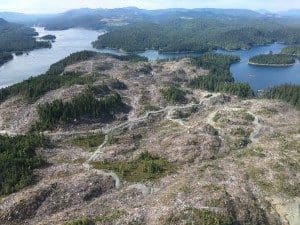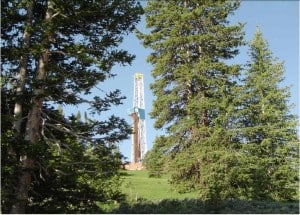
The district court for Idaho has enjoined the Trump Administration’s attempt to cut back protection of sage-grouse on BLM lands in Idaho, Wyoming, Colorado, Utah, Nevada/Northeastern California, and Oregon from that provided by plan amendments in 2015. (A similar decision has been pending for national forest plans.) The changes made in the 2019 amendments to BLM land management plans can not be implemented, and the provisions in the 2015 amendments will apply (projects must be consistent with the 2015 amendments) until the case is decided on the merits. (A link to the opinion is included with this news release.)
Moreover, the court telegraphed the merits pretty clearly:
“… the plaintiffs will likely succeed in showing that (1) the 2019 Plan Amendments contained substantial reductions in protections for the sage grouse (compared to the 2015 Plans) without justification; (2) The EISs failed to comply with NEPA’s requirement that reasonable alternatives be considered; (3) The EISs failed to contain a sufficient cumulative impacts analysis as required by NEPA; (4) The EISs failed to take the required “hard look” at the environmental consequences of the 2019 Plan Amendments; and (5) Supplemental Draft EISs should have been issued as required by NEPA when the BLM decided to eliminate mandatory compensatory mitigation.”
(1) “The stated purpose of the 2019 Plan Amendments was to enhance cooperation between the BLM and the States by modifying the BLM’s protections for sage grouse to better align with plans developed by the States. While this is a purpose well-within the agency’s discretion, the effect on the ground was to substantially reduce protections for sage grouse without any explanation that the reductions were justified by, say, changes in habitat, improvement in population numbers, or revisions to the best science contained in the NTT and CTO Reports.” The agencies did not fulfill their duty to explain why they are now making a different decision based on the same facts.
(2) The no-action alternative did not meet the purpose and need, and there was only one action alternative. “Common sense and this record demonstrate that mid-range alternatives were available that would contain more protections for sage grouse than this single proposal.”
(3) The BLM prepared six EISs based on state boundaries, but failed to provide the “robust” cumulative effects analysis this situation required. In particular, “connectivity of habitat – requires a large-scale analysis that transcends the boundaries of any single State.”
(4) “Certainly, the BLM is entitled to align its actions with the State plans, but when the BLM substantially reduces protections for sage grouse contrary to the best science and the concerns of other agencies, there must be some analysis and justification – a hard look – in the NEPA documents.” The court took particular note of the EPA comments that were ignored, and Fish and Wildlife Service endorsement of the 2015 amendments in deciding not to list the species under ESA because they adopted scientific recommendations (see below).
(5) Compensatory mitigation measures were eliminated after the draft EIS, which “appears to constitute both “substantial changes” to its proposed action and “significant new circumstances” requiring a supplemental EIS.
The case provides a good example of how science is considered by a court, which allowed declarations from outside experts to determine if relevant environmental consequences were ignored. The court relied heavily on earlier scientific reports that included normative “recommendations,” but the court focused on their scientific conclusions, such as “surface-disturbing energy or mineral development within priority sage-grouse habitats is not consistent with the goal to maintain or increase populations or distribution,” and “protecting even 75 to >80% of nesting hens would require a 4-mile radius buffer.” The Final EISs stated that there would be no measurable effects or they would be beneficial to sage-grouse, but the BLM either had no analysis or ignored this contrary information.







